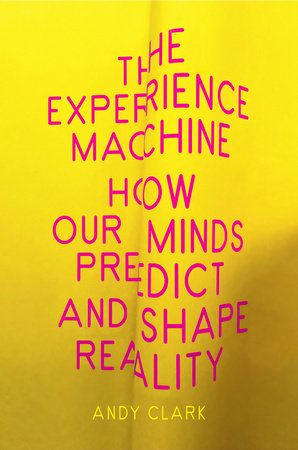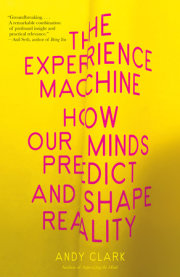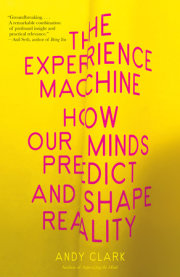1. UNBOXING THE PREDICTION MACHINE It’s morning and I’m still asleep in my bedroom, a daunting pile of work perched uneasily beside the bed. Waking dozily from sleep I hear some gentle birdsong. Or at least, that’s how it seems to me at first. But I soon discover that I am mistaken. I listen harder and realize that all is deathly quiet. Not even my cats’ early mewling for food breaks the silence. I was hallucinating birdsong.
Fortunately, there is a simple explanation. My partner recently decided to ease the process of waking up in the morning by using a smartphone app that plays a birdsong instead of a traditional alarm. The app alarm starts off as a gentle chirping that very gradually, and very slowly, builds to something approximating a full morning chorus. Today, the alarm was not actually going off—it was far too early. Nor does the sound of real birdsong ever make it through the double- glazing. But I have become so used to waking up to the gently increasing tweeting of the alarm that my brain has started to play a trick on me. I now _find that I quite often awake well in advance of the start of the actual alarm, already seeming to hear the faint onset of those prerecorded chirps.
These are genuine auditory hallucinations, caused by my new, strong expectation of waking to the subtle sound of the birds. There is probably nothing sinister about my proneness to this hallucination. It has long been known that hallucinations, both auditory and visual, can be quite easily induced by the right kind of training. But these, as well as a myriad of other intriguing phenomena, are lately falling into place as signs of something much larger—something that lies at the very heart of all human experience. The idea (the main topic of this book) is that human brains are prediction machines. They are evolved organs that build and rebuild experiences from shifting mixtures of expectation and actual sensory evidence. According to that picture, my own unconscious predictions about what I was likely to be hearing as I awoke pulled my perceptual experience briefly in that direction, creating a short- lived hallucination that was soon corrected as more information flowed in through my senses. That new information (signifying the lack of birdsong) generated “prediction error signals” and these—on this occasion at least—were all it took to bring my experience back into line with reality. The hallucination gave way to a clear experience of a silent room. But in other cases, as we’ll see, mistaken predictions can become entrenched and contact with reality (itself a complex and vexed notion) harder to achieve. Even when there are no mistakes involved, and we are seeing things “as they are,” our brain’s predictions are still playing a central role. Predictions and prediction errors are increasingly recognized as the core currency of the human brain, and it is in their shifting balances that all human experience takes shape.
This book is about those balances and an emerging science that turns much of what we thought we knew about perceiving our worlds upside down. According to that science, the brain is constantly trying to guess how things in the world (and our own body) are most likely to be, given what has been learned from previous encounters. Everything that I see, hear, touch, and feel—so this new science suggests—reflects hidden wells of prediction. If the expectations are sufficiently strong or (as in early chirps of the bird alarm) the sensory evidence sufficiently subtle, I may get things wrong, in effect overwriting parts of the real sensory information with my brain’s best guess at how things ought to be.
This does not mean that successful sensing is simply a form of hallucination, though the mechanisms are related to those of hallucination. We should not downplay the importance of all that rich sensory information arriving at the eyes, ears, and other senses. But it casts the process of seeing—and of perceiving more generally—in a new and different way. It casts it as a process led by our brain’s own best predictions: predictions that are then checked and corrected using the sensory inputs as a guide. With the prediction machinery up and running, perception becomes a process structured not simply by incoming sensory information but by difference—the difference between the actual sensory signals and the ones the brain was expecting to encounter.
Since brains are never simply “turned on” from scratch—not even first thing in the morning when I awake—predictions and expectations are always in play, proactively structuring human experience every moment of every day. On this alternative account, the perceiving brain is never passively responding to the world. Instead, it is actively trying to hallucinate the world but checking that hallucination against the evidence coming in via the senses. In other words, the brain is constantly painting a picture, and the role of the sensory information is mostly to nudge the brushstrokes when they fail to match up with the incoming evidence.
This new understanding of the process of perceiving has real importance for our lives. It alters how we should think about the evidence of our own senses. It impacts how we should think about the way we experience our own bodily states—of pain, hunger, and other experiences such as feeling anxious or depressed. For the way our bodily states feel to us likewise reflects a complex mixture of what our brains predict and what the current bodily signals suggest. This means that we can, at times, change how we feel by changing what we (consciously or unconsciously) predict.
This does not mean we can simply “predict ourselves better,” nor does it mean we can alter our own experiences of pain or hunger in any way we choose. But it does suggest some principled and perhaps unexpected wiggle room—room that, with care and training, we might turn to our advantage. Handled carefully, a better appreciation of the power of prediction could improve the way we think about our own medical symptoms and suggest new ways of understanding mental health, mental illness, and neurodiversity.
Copyright © 2023 by Andy Clark. All rights reserved. No part of this excerpt may be reproduced or reprinted without permission in writing from the publisher.







